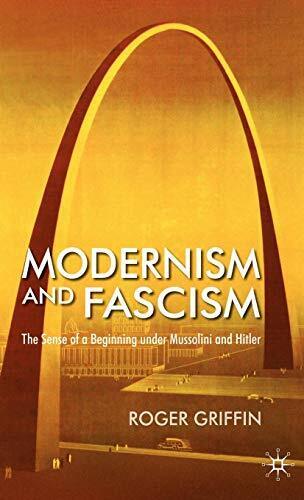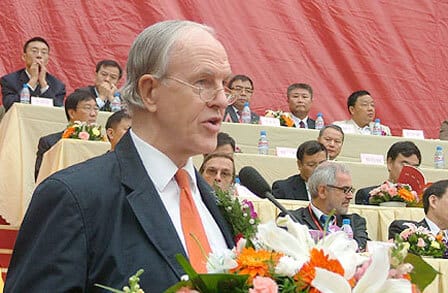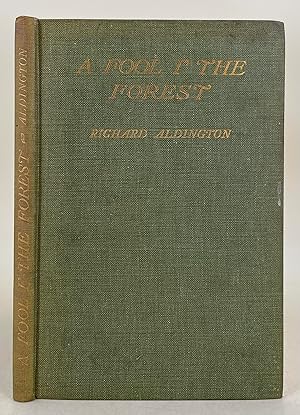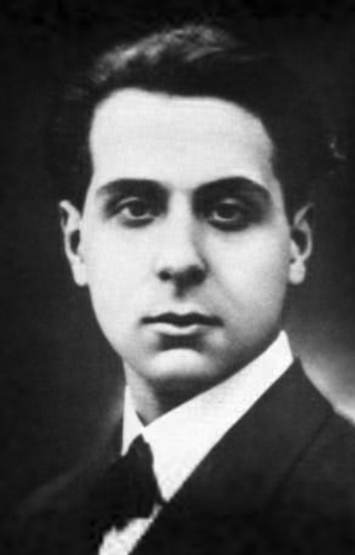This review was published in Essays in Criticism, 60 (2010), 189-96, and appears here as a pre-edited version.
Summary
Review of Roger Griffin’s Modernism and Fascism: the Sense of a Beginning under Mussolini and Hitler (London: Palgrave Macmillan, 2007)
Griffin argues that modernism has hitherto been too narrowly conceived – as an aesthetic but not a social phenomenon, and as overwhelmingly connected to the left wing. The second point is not wholly dependent on the first; there are, Griffin contends, many more right-wing works of aesthetic modernism than have previously been recognised. Italian fascism and Nazism embraced aesthetic modernism to a significant degree, and were politically modernist in their desire to achieve national rebirth through social acts of creative destruction. Griffin at times pushes at an open door. His main area of interest is neither literature nor Britain (he concentrates on plastic art, Germany, and Italy); readers approaching his book from an English-literary perspective are unlikely to assume that modernism is predominantly a leftist phenomenon. His prose is sadly jargon-encumbered. But his conclusion – considering the respects in which we today are ‘modernist’ (and in which the state of Israel is the sole surviving state based in late-nineteenth century racial ideology) – is lively.
MODERNISM IN OUR TIME
Modernism and Fascism: The Sense of a Beginning under Mussolini and Hitler. By Roger Griffin
Palgrave Macmillan, 2007; £56.
Modernism and Fascism feels like a culmination. Since publishing The Nature of Fascism sixteen years ago, Roger Griffin has written numerous articles and given numerous papers on the relationship of modernism to fascism; this is their richly documented, rigorously theorised, 460-page apogee. A precis of its argument can, for example, be found in ‘Modernity, Modernism, and Fascism: A “Mazeway Resynthesis”’ (Modernism/Modernity, 15/1 (2008), 9-24). Modernism has hitherto been too narrowly conceived – as an aesthetic but not a social phenomenon, and as overwhelmingly connected to the left wing. The second point is not wholly dependent on the first; there are, Griffin contends, many more right-wing works of aesthetic modernism than have previously been recognised. Italian fascism and Nazism embraced aesthetic modernism to a significant degree, and were politically modernist in their desire to achieve national rebirth through social acts of creative destruction. Griffin offers the image of the Russian doll: Italian fascism and Nazism fit into fascism, which fits into modernism, which fits into modernity.
Modernity itself is argued to have different stages, and this book is concerned with that dating from roughly 1850 to 1945. During this period the ‘sacred canopy’, which humans have constructed throughout history in order to shelter them from an awareness of their own mortality and meaninglessness, was ruptured by developments in industry, biology, and geology. The resulting loss of ævum (‘transcendental time’), sense of anomie, and perception of cultural decadence produced the reaction of modernism in its myriad aesthetic, social, and political forms. Since the ‘sacred canopy’ has been ruptured, and this rupturing has met with a range of responses, at numerous stages of human history, modernism is the most important recent example of what is a perennial human phenomenon.
Griffin offers some particularly striking evidence in the case of Nazism. Goebbels, for example, wrote warmly to the painter Edvard Munch on the occasion of the latter’s seventieth birthday in 1933 and – even after Munch was anathematised by the Nazi Party in 1937 – arranged for his burial in Quisling’s Norway in a coffin draped with swastikas. The expressionists Ernst Barlach and Emil Nolde, and architectural modernist Mies van der Rohe, sought and to some degree found the approval of the Nazi government before 1937. During the same period, performances of Bartok, Stravinsky, and Richard Strauss were permitted, and – although jazz was condemned as aesthetically and racially decadent – its big band version Swing was tolerated as enhancing Lebensfreude. The technocratic streak of the Nazi movement was expressed in the modernist neoclassicism of such buildings as Albert Speer’s, and in such visual art genres as Autobahnkunst. Much of the art – whether aesthetically modernist or not – which allied itself to fascism was charged by what Griffin calls ‘programmatic modernism’ – ‘the mission to change society, to inaugurate a new epoch, to start time anew’. This is to be distinguished from the ‘epiphanic’ modernism of art which aimed only at the evocation of momentary spiritual renewal on the part of individuals – as in the works of Marcel Proust, T. S. Eliot, James Joyce, Virginia Woolf, and Franz Kafka. Programmatic and epiphanic modernisms – however different – were linked by their orientation towards the transcendent.
There is much to admire in this ‘high-altitude reconnaissance mission’ of the two massive and messy concepts which form the book’s title. The verbal and (monochrome) visual illustrations of fascism’s embrace of aesthetic modernism memorably support the argument. What Griffin calls his ‘methodological empathy’ – his attempt to describe the mentality of fascism from within – leads him to acknowledge the generous, noble, and optimistic feelings to which fascisms appealed, and without which these movements would have had far less power. Movements which oppress minorities cannot be understood, or guarded against, without recognition of this factor. Griffin extends ‘modernism’ to encompass the popular fervour for national cleansing and regeneration which he considers to have contributed to the First World War: ‘War-fever was thus both an elite and mass movement of modernist reactions to the historical crisis’; the war was therefore a modernist event. This is an intriguing interpretation which is saved from fatal exaggeration by its explicit exclusion of Italy and Russia, and of the change of feeling which occurred during the war’s last year.
The book spends little time discussing Bolshevism, but when it does so it uses it helpfully as an analogue to fascism. Both types of movement responded to the pressures of modernity with a modernist desire for transcendence and renewal which was apparent even in the non-modernist art which supported it; socialist realism was in many respects revolutionary, and so too was similarly styled Nazi and Italian fascist art. Moreover, as Griffin might have noted, the Soviet Union was far more tolerant of the avant-garde between 1934 and 1953 than has until recently been recognised in the West. Stalin commissioned constructivist architects to build his two country villas at Kuntsevo and Sochi. He awarded the Stalin Prize several times to Prokofiev, and ensured that Eisenstein was given the most important film commissions. Given these similarities, Griffin might more often have used the term ‘revolutionary’ in his discussion of fascism; but, perhaps because of the left-wing connotations of the term, he prefers Aufbruch – a ‘breaking into a new phase or situation’.
There is great ambition in the range of subjects which Griffin covers, and the attendant disciplines on which he draws: architecture, visual art, music, literature, modern dance, philosophy, psychology, spiritualism, and militant vegetarianism. He seems most at home with philosophy and the plastic arts, but he writes illuminatingly about all of the others. He avoids conflating the movements he describes, and makes precise distinctions between the philosophical origins, political nature, and aesthetic policies of Italian fascism and Nazism. He pointedly uses Primo Levi’s removal by cattle-truck from Turin to Auschwitz.
One of the major benefits of a book of such overarching scope (the massive arch on its front cover is apt) is the broad context in which it places whatever one’s specialism within the field of ‘modern’ history happens to be. Two writers with whom the present reviewer is concerned – Leo Tolstoy and D. H. Lawrence – can easily be described in the terms Griffin proposes. The later Tolstoy, with his plans for physical and spiritual renewal within a Russian Christian–anarchist context, is a programmatic modernist. Lawrence, with his fitful interest in a ‘Rananim’ community, and with his transient beliefs in Russia, the United States, and Mexico as countries ‘of the future’, is both a spasmodically programmatic and a persistently epiphanic modernist. It is stimulating to be provoked to place two such different authors within the single context of European modernity.
Modernism and Fascism is ambitious and rightly anticipates criticism, from which it seeks pre-emptively to defend itself. It claims to be treading a fine line between crippling postmodern self-doubt and naively essentialising historicism. It does not offer a falsifiable thesis, but a ‘historical interpretation’: ‘a full-blown grand récit, but one which never makes “totalizing” claims’. One of the book’s principal aims is to be a heuristic stimulus to further debate. Its other aim is to awaken an emotionally charged interest in the major issues which concern the present as much as the past. The penultimate page contains the following passionate appeal: ‘I would almost prefer to be found unintelligible than to be responded to as if this whole book was simply an invitation to play an elaborate game of conceptual chess or ping-pong about modernism’s relationship to fascism, oblivious of the questions it should raise at a visceral level about such ‘cosmological’ issues as the nature of modernity, progress, the state.’
In the same spirit, the book aims to ‘break down the artificial barriers Western society has tended to erect between thought and experience, intellect and feeling’. Yet, whatever else it does, it also plays ‘conceptual chess’ about ‘modernism’s relationship to fascism’, and in doing so invites certain counter-moves. Griffin’s ‘maximalization’ of modernism to a paradoxical, syncretic concept which requires more than a page for its definition is a process which he himself likens to the enlargement of the European Union to include culturally ‘alien’ societies. The problem, in this case, is where this process leaves the more established members. It is not always clear how aesthetic modernism per se fits into the expanded union. In particular, ‘epiphanic modernism’, with its desire ‘to distil the eternal from the transitory’, is a weak concept with which to link Woolf and Joyce to a phenomenon which encompasses Nazism and Bolshevism. Moreover, arguably the dominant aim of both these writers was to describe what life actually was, rather than how it ought to be, or how anomie might temporarily be escaped from. Griffin’s chronology is not concerned with the rise of the avant-garde as such; there is no room in it for Woolf’s ‘on or about December 1910 human nature changed’.
Griffin’s association of modernism with the right wing applies a great deal of pressure to a relatively open door. Those who approach modernism from the perspective of English literature, as many readers of these pages do, are more likely to associate it with the right than with the left. The list of ‘usual suspects’ of fascist intellectuals which Griffin provides towards the end of his book includes W. B. Yeats, Ezra Pound, Wyndham Lewis, D. H. Lawrence, and T. S. Eliot. These are indeed ‘usual’ suspects – and Heidegger and Nietzsche are usually presented as their philosophical forerunners. Moreover, the dominant narrative of British literary history is that, as high modernism waned in the 1930s, the political leaning of the most prominent literature shifted to the left. Admittedly, Griffin’s work is not concerned with Britain, but it does claim to have application to modernism in general. The association of modernism with the left wing is a Nazi conceit (Kulturbolschewismus) and a Western Cold War one (associating the permitted avant-garde with freedoms denied in the East). However, it is one which has long since been challenged. When Griffin states that the term ‘modernist’ ‘should long since have shed connotations of “good” or “rational”’, many readers who have never had any such associations will be bemused. So too will those who do not associate ‘left-wing’ and ‘progressive’ with ‘good’ or ‘rational’, and ‘right-wing’ and ‘reactionary’ with the reverse.
Griffin’s perennialist argument relies on two assumptions: first, that a reaction to the loss of a ‘sacred canopy’ was an important factor behind the rise of fascisms, and, second, that beyond any ‘sacred canopy’ exists ‘absolute night’. The first somewhat exaggerates the extent to which secularisation had proceeded in Italy and Germany by 1945, and correspondingly understates the extent to which religious belief coexisted with support of fascism on the part of many individuals. The second has an equivocal relationship to Griffin’s own claim not to be offering a ‘truth’, but a ‘historical interpretation’; Griffin is no less confident in his atheism than Dawkins. In a footnote he asks holders of religious faiths for patience, expressing the hope that from his book they will gain a better ‘understanding of modern history and the extreme pressures it exerts on faiths both religious and secular’. Of course, holders of a religious faith may well have a different understanding from Griffin of the way in which human history works, and of what modernity means; but the point is at least raised.
Griffin admits that the book was ‘written in an academic register and with an academic methodology’, and ‘was demanding to write and will doubtless be even more demanding to read’. Despite this, he hopes that it has some ‘resonance’ with Nietzsche’s ‘rejection of abstract thought’. Yet this plea is made in an appendix entitled ‘More on Methodology’, and the resonance would have been louder had he shunned the more rebarbative reaches of ‘academic register’: ‘palingenesis’ for ‘rebirth’; ‘mazeway resynthesis’ for ‘combination of world-views’; and the modish but lumpen ‘liminoidality’. Such terms sit strangely alongside the rhetorically emotive language with which he sometimes suddenly refers to genocide or war: ‘untold millions’, ‘spiritually wounded’, and ‘nations in the rubble of broken promises and shattered dreams’.
Nonetheless, his book offers a lot. Its last pages, rather than merely summarising the argument, direct it to present concerns. Regarding ‘postmodernism’, it not only makes the obvious point that some of its exponents totalise ‘through the back door’, but also argues postmodernism to be a form of late modernism which wages ‘war against decadence’, ‘with its own rites and cultic discourse presided over by “major” thinkers, luminaries who assume the guise of prophetae weaving intellectual spells’. ‘Meanwhile millions of their fellow human beings continue to inhabit not postmodernity, but high modernity’. Given this tone of invective, it is notable that he chooses not to dwell on accusations of postmodernism as itself ‘fascistoid’, nor on its debt to Heidegger, who receives considerable attention in the book as a Nazi. Concerning the environment, Griffin argues that what is needed is an Aufbruch into a sustainable society through a new modernist movement which is both technocratic and green. This is to be kept carefully distinct from the nationalist, fascistoid variants of the ecological movement which already exist; it should have no reference to ævum, but should project itself in purely human history and time. Religious extremism is described as protecting the ‘sacred canopy’ from modernist assault. However, Griffin retrospectively clarifies his position on fascism by arguing that, unlike fascism, Al- Qaeda is not modernist but reactionary in its attempt to defend a tradition which is not yet irreparably damaged.
The book also casts light on the problem of Israel. It places the origins of Zionism in the context of intensely modernist fin-de-siècle Vienna, and describes Max Nordau as politically modernist in his denunciation of degeneration, support for eugenics, conception of ‘muscular Judaism’, and ambition for ‘national redemption achieved not just through a New Homeland but by being inscribed within each Jewish body’.
‘The völkisch movement and Zionism are just two of a plethora of illiberal forms of identity politics known as “organic”, “tribal”, “integral”, or “redemptive” nationalism that came to prominence in late nineteenth century Europe, and which by common academic consensus was destined to contribute vital ingredients to fascism.’
One of the more ‘visceral’ effects of the book is to make one aware of the extent to which we ourselves are products of late nineteenth and early twentieth century modernity. Our breakfast cereals, our attitudes towards health and our bodies, and our feelings about technology and nature are all connected to impulses that arose in this period. So too, by its own confession, is Modernism and Fascism. In its wish to secede from ‘routinised thoughts, and superseded paradigms’ it has ‘a modernist dynamic’. Its subtitle, The Sense of a Beginning under Mussolini and Hitler, fits with its ambition to create a new beginning in fascism studies. Its desire to ‘break down the artificial barriers Western society has tended to erect between thought and experience, intellect and feeling’ was shared by D. H. Lawrence, who lamented the day when philosophy and fiction were split ‘the novel went sloppy, and philosophy went abstract-dry’.




